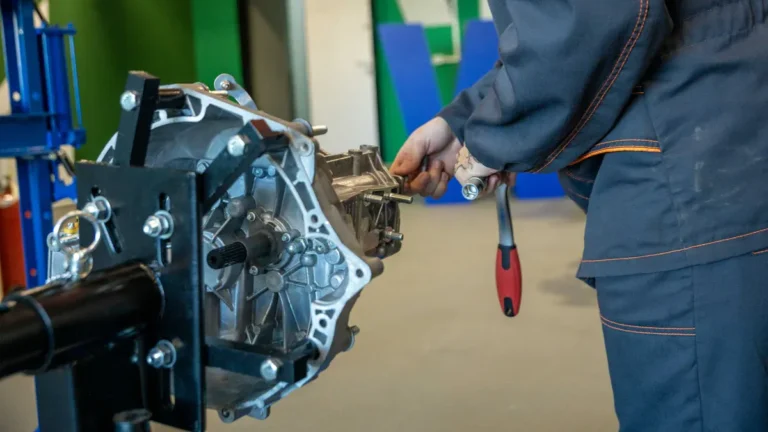Modern ambulances vary in height based on their type and design. Type I ambulances, which are built on truck chassis, generally stand around 110 inches tall including roof equipment. Type III ambulances, often cutaway vans, tend to be shorter, ranging from about 80 to 83 inches in height.
Inside, headroom can vary from roughly 68 to 83 inches depending on the roof options, aiming to provide comfort and enough space for medical personnel to work efficiently. Aisle widths commonly fall between 46 and 49 inches, with module widths close to 94 to 96 inches, all designed to fit within federal limits to guarantee safe operation and garage compatibility. These dimensions are influenced by chassis choice, customization needs, and regulations, making ambulance height a balance between function, safety, and patient care space. This interplay of design and regulation shapes the specifications that are vital for emergency response effectiveness.
Typical Height Ranges of Ambulance Types
Ambulance heights vary markedly across the main types, shaped largely due to their chassis and intended use. Type I ambulances, built on heavy-duty truck chassis like the Ford F-450 or Dodge RAM 4500, typically reach around 110 inches (9 feet 2 inches) in total height, including rooftop equipment. These taller profiles accommodate advanced life support (ALS) equipment and spacious interiors, though the added height influences manufacturing costs and requires careful integration of advanced lighting technology.
In contrast, Type III ambulances, based on van cutaway chassis such as the Ford E-350, generally measure between 80 to 83 inches (approximately 6 feet 11 inches to 7 feet) tall, offering a more compact design suited for urban environments. The balance between height, operational functionality, and cost optimization is critical as manufacturers tailor ambulances to diverse mission demands while ensuring compliance with federal height regulations.
Interior Headroom and Workspace Dimensions
While the outside height of an ambulance shapes its silhouette on the road, what really matters to the crew working inside is the amount of headroom and workspace available for patient care. Standard interior headroom is typically about 72 inches, allowing medical staff to stand comfortably while attending to patients, which is essential for effective workflow optimization.
Some Type III ambulances offer slightly less headroom near 68 inches but compensate with wider aisles around 46 to 49 inches, improving mobility and access to equipment.
Lighting ergonomics inside the module are carefully designed to improve visibility without causing glare or fatigue, supporting precise medical interventions. High-roof ambulances can provide up to 83 inches of headroom, expanding ergonomic comfort and enabling smoother movement for the crew during emergencies.
This balance of height and aisle space critically influences how smoothly tasks are performed in the tight interior environment.
Length and Width Specifications of Ambulances
Length and width dimensions play a key role in ambulance design, affecting both functionality and maneuverability. The module length—the patient care area behind the cab—typically ranges from about 148 inches for smaller Type III ambulances to 170 inches for larger Type I models, with some full vehicle lengths stretching beyond 270 inches whenever the chassis is included. Most ambulances keep their module width near 96 inches, which complies with federal guidelines and guarantees garage compatibility for hospitals and stations. Aisle width inside the ambulance usually falls between 46 and 49 inches, providing enough space for medical teams to move around patients and equipment. These measurements influence the ambulance’s turn radius, parking ease, and ability to fit into tight spaces, which are crucial for quick, safe emergency response in both city streets and rural areas.
| Specification | Type I Ambulance | Type III Ambulance |
|---|---|---|
| Module Length | 170 inches (typical) | 148–169 inches (typical) |
| Module Width | 96 inches | 94–96 inches |
| Total Vehicle Length | Up to 290+ inches | Up to 279 inches |
| Aisle Width | 46–48 inches | 49 inches |
| Wheelbase | 191–193 inches | 159–171 inches |
Ambulance Chassis and Type Differences
Heavy-duty truck chassis and van cutaway chassis form the foundation for distinct ambulance types, each customized to different operational needs.
Type I ambulances, built on trucks like Ford F-450/550 and Dodge RAM 4500/5500, support heavier loads and longer modules, offering advanced engine options such as 6.7L diesel V8s and automatic transmissions. These sturdy engines increase power but lead to higher maintenance costs compared to smaller vans.
In contrast, Type III ambulances employ van-based cutaway chassis like Ford E-350 or Chevy G-3500, balancing lower maintenance expenses with adequate engine performance for urban responses. These configurations also provide varying interior dimensions and aisle widths to suit treatment needs.
Choosing between them depends on mission demands, cost considerations, and required workspace, linking chassis type directly to operational efficiency and life-cycle expenses.
Federal and Safety Regulatory Height Limits
Ambulance height is strictly regulated to assure safety and operational efficiency on the road.
Federal guidelines typically set a maximum vehicle height of 110 inches at curb weight, which includes rooftop equipment but excludes antennas, to guarantee clearance under bridges and other structures.
This limit helps manufacturers and users balance the need for interior space with safety, making certain the vehicle fits within established road standards without sacrificing critical equipment or workspace inside.
Maximum Vehicle Height
Key federal height regulations include:
- Maximum total height capped at 110 inches (279 cm) at curb weight, including rooftop equipment but excluding antennas.
- Compliance with garage compatibility to fit standardized emergency vehicle bays.
- Width limits fixed at 96 inches (244 cm), excluding mirrors and safety add-ons.
- Ground clearance requirements of at least 8 inches under load for maneuverability.
- Mandated approach, breakover, and departure angles to support urban driving conditions.
These standards guarantee ambulances are both practical for medical staff and safe within public infrastructure limits.
Equipment Roof Clearance
Roof clearance regulations for ambulances play a critical role in guaranteeing these emergency vehicles safely traverse urban and rural environments without risking collisions with low overpasses, parking structures, or signage. Federal standards set the maximum total ambulance height at 110 inches, including rooftop equipment but excluding antennas, to maintain safe clearance under such obstacles.
This height limit guarantees mounting integrity of roof equipment, which must be securely fastened to withstand transit stresses. Additionally, weatherproof sealing around rooftop components is essential to prevent water intrusion, which can degrade electronics and compromise patient care equipment.
Maintaining these strict height and sealing standards prevents damage during emergency response and supports reliable operation. Meeting these requirements protects both occupants and the vehicle while helping ambulances remain agile and dependable in diverse environments.
Customization and Variability in Ambulance Dimensions
Since operational requirements vary widely, ambulance dimensions offer considerable customization to meet different mission demands and regional regulations.
Ambulance manufacturers tailor vehicles to optimize performance, safety, and functionality through adjusting suspension tuning for better ride stability and integrating modular compartments to organize medical equipment efficiently.
Customization features include:
- Variable module lengths from 148 to over 270 inches to suit space needs
- Adjustable interior headroom between 68 to 83 inches based on chassis and roof design
- Aisle widths varying from 46 to 49 inches to balance maneuverability and workspace
- Specialized suspension tuning to improve ride quality and load handling on diverse terrains
- Modular compartments allowing customizable storage and equipment placement to maximize operational efficiency
These options allow emergency services to select ambulances precisely matched to their operational circumstances and regulatory environments.



